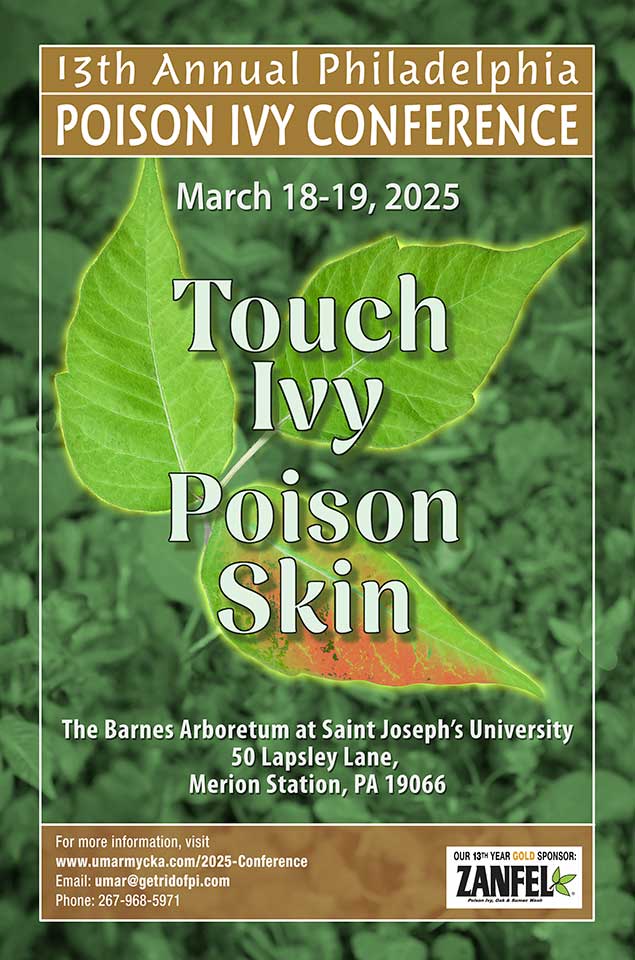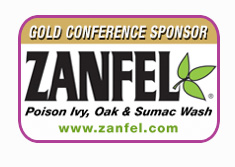Poison Ivy Conference 2025
- Home
- Poison Ivy Conference 2025
Register for event here!

The most ancient of human senses. Touch makes us aware of our surroundings and our feelings. What happens when this subtle sense is hijacked in subterfuge to deliver a weeks-long shock, tricking our immune system into signaling our body to attack itself?
Welcome to the world of Toxicodendron radicans (Poison Ivy) resin
During the 2025 Poison Ivy Conference in Philadelphia, we’ll explore the phenomenon of touch between plants and humans.
1. Many folks maintain that they can catch a poison ivy rash” through the air.” That’s not true. Why isn’t it true?
2. People say that a very bad rash is caused by a plant other than poison ivy, like poison oak or sumac. That’s not true. Why do rash intensities differ in different situations?
3. Does a rash from a male or female poison ivy plant present with the same intensity?
Why would that be true?
4. Can male and female poison ivy plants be identified by looking at their leaves as the only cue?
Let’s spend some time in one of the best plant touch gardens in the United States. What understanding will a session of plant tactile experiences reveal about plants, people, and touch?
2025 13th ANNUAL PHILADELPHIA
POISON IVY CONFERENCE
Itinerary
Tuesday, March 18, 2025
Presentations
50 Lapsley Lane, Merion Station, PA 19066
8:30 am – 9:00 am: Registration
9:00 am – 9:30 am : Opening remarks
9:30 am – 10:15 am: “Report on Poison Ivy Plan Pollination Study: Honey Bees Found To Pollinate Poison Ivy Plants” Presented by Umar Mycka
10:15 am – 10:30 am: Break
10:30 am – 12:00 pm: “Getting the skinny on urushiol- induced Toxicodendron Dermatitis” presented by Dr. John Jelesko
12:00 pm – 1:00 pm: Lunch break
1:00 pm – 2:00 pm: Museum Tour of Maguire Art Museum, formerly Barnes Foundation Art Museum
2:00 pm – 3:30 pm: Poison ivy plant growth observations by conference participants
3:30 pm – 3:45 pm: Break
3:45 pm – 4:45 pm: Discussion/presentation by conference participants about poison ivy plants growing around the country and around the world
4:45 pm – 5:00 pm: Conference wrap up and closing remarks
6:00 pm – 9:00 pm: Participants will gather at restaurant for dinner
Wednesday, March 19, 2025
Field Study
Sense of Touch
Barnes Arboretum at Saint Joseph’s University
50 Lapsley Lane, Merion Station, PA 19066
9:30 am: Participants are to meet in the parking lot of Barnes Arboretum
10:00 am – 1:00 pm: A Field study focused on the Barnes Arboretum collection of exfoliating bark plants.
1:30 pm: Conclusion/wrap-up of conference

